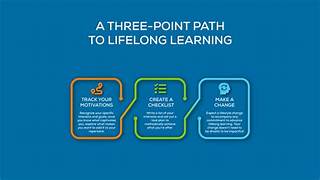How Does E-learning Support Lifelong Learning and Professional Development?
E-learning has revolutionized the way individuals pursue lifelong learning and professional development. With its flexibility, accessibility, and diverse content offerings, it has become a vital tool for learners and professionals alike. This article explores how e-learning fosters continuous education and career growth, its advantages, challenges, and the role it plays in shaping the modern workforce.
The Concept of Lifelong Learning and Professional Development
Lifelong learning refers to the ongoing, voluntary, and self-motivated pursuit of knowledge for personal or professional reasons. Professional development, on the other hand, involves acquiring new skills or enhancing existing ones to advance in one’s career. Both are essential in today’s fast-paced world, where technological advancements and industry demands require continuous adaptation.
E-learning bridges the gap by offering resources that cater to these needs, enabling learners to upgrade their skills conveniently and cost-effectively.
How E-learning Supports Lifelong Learning
1. Accessibility Anytime, Anywhere
E-learning platforms break geographical barriers, providing learners access to educational content from anywhere in the world. This is especially beneficial for individuals in remote areas or those with mobility challenges.
2. Personalized Learning Paths
Modern e-learning systems utilize artificial intelligence to tailor content to individual learning styles, paces, and goals. This personalization enhances engagement and ensures that learners focus on relevant material.
3. Diverse Learning Opportunities
E-learning platforms offer a vast array of courses across disciplines, from technical skills to creative arts. Learners can explore new interests or deepen expertise in their chosen fields.
4. Cost-Effective Education
Traditional education often comes with high tuition fees and associated costs. E-learning reduces these expenses by providing affordable or even free courses, making lifelong learning more accessible.
5. Continuous Skill Development
With the rapid pace of technological advancements, e-learning helps individuals stay updated with industry trends and emerging tools, ensuring their skills remain relevant.
E-learning and Professional Development
1. Upskilling and Reskilling
As industries evolve, professionals must acquire new competencies or shift to entirely new career paths. E-learning provides targeted courses that help individuals upskill or reskill efficiently.
2. Industry-Specific Training
Many e-learning platforms collaborate with industry experts to offer specialized training, certifications, and practical knowledge that align with professional standards.
3. Flexibility for Working Professionals
Balancing work, personal commitments, and education can be challenging. E-learning offers flexible schedules and on-demand content, allowing professionals to learn at their convenience.
4. Recognition Through Certifications
Completing e-learning courses often results in certifications recognized by industries. These credentials enhance resumes and provide tangible proof of skill mastery.
5. Networking Opportunities
Online forums, webinars, and collaborative projects on e-learning platforms facilitate networking with peers, mentors, and industry leaders, fostering professional relationships.
Benefits of E-learning in Lifelong Learning and Professional Development
1. Enhanced Motivation and Engagement
Interactive content, gamification, and real-time feedback keep learners motivated and engaged, making learning an enjoyable experience.
2. Self-Paced Learning
Learners can progress at their own speed, ensuring they fully grasp concepts before moving on to more advanced topics.
3. Global Collaboration
E-learning platforms connect learners worldwide, promoting cross-cultural understanding and diverse perspectives.
4. Immediate Application of Skills
Professionals can apply new knowledge and skills directly to their jobs, enhancing productivity and career progression.
5. Eco-Friendly Learning
E-learning reduces the need for physical materials and transportation, making it an environmentally sustainable option.
Challenges in E-learning for Lifelong Learning and Professional Development
1. Digital Divide
Access to reliable internet and technology remains a challenge for some learners, limiting their ability to participate in e-learning.
2. Lack of Hands-On Experience
Certain skills, particularly in technical or manual fields, require practical training that e-learning may not fully provide.
3. Self-Discipline Requirements
E-learning demands high levels of self-motivation and time management, which can be challenging for some individuals.
4. Quality Assurance
The abundance of online courses makes it difficult to assess the quality and credibility of all available content.
5. Limited Interaction
While e-learning offers forums and virtual discussions, it may lack the immediacy and depth of face-to-face interactions.
Strategies to Maximize the Impact of E-learning
1. Integrating Blended Learning
Combining online education with in-person training can provide a well-rounded learning experience.
2. Promoting Digital Literacy
Educators and organizations should focus on improving digital skills to ensure all learners can benefit from e-learning.
3. Enhancing Content Quality
E-learning providers must prioritize creating high-quality, engaging, and up-to-date content to maintain learner trust and interest.
4. Providing Support Systems
Mentorship programs, virtual office hours, and responsive customer support can help address learner concerns effectively.
5. Encouraging Peer Collaboration
Group projects, discussion forums, and peer reviews foster collaboration and simulate real-world professional environments.
Future Trends in E-learning for Lifelong Learning and Professional Development
1. AI and Machine Learning
AI-powered platforms will offer even more personalized learning experiences, predicting learner needs and adapting content dynamically.
2. Virtual and Augmented Reality
Immersive technologies will provide hands-on training and realistic simulations, bridging the gap between theory and practice.
3. Microlearning Modules
Short, focused learning units will cater to busy professionals seeking to acquire specific skills quickly.
4. Gamification
Incorporating game elements into e-learning will boost motivation and retention, making learning more engaging.
5. Global Accessibility Initiatives
Efforts to expand internet access and affordable technology will bring e-learning to underserved communities worldwide.
Conclusion
E-learning is a powerful tool that supports lifelong learning and professional development by providing accessible, flexible, and diverse educational opportunities. While challenges remain, ongoing advancements in technology and strategies to address barriers will continue to enhance its effectiveness. As the demand for continuous education grows, e-learning will play an increasingly integral role in empowering individuals and shaping the future workforce.


